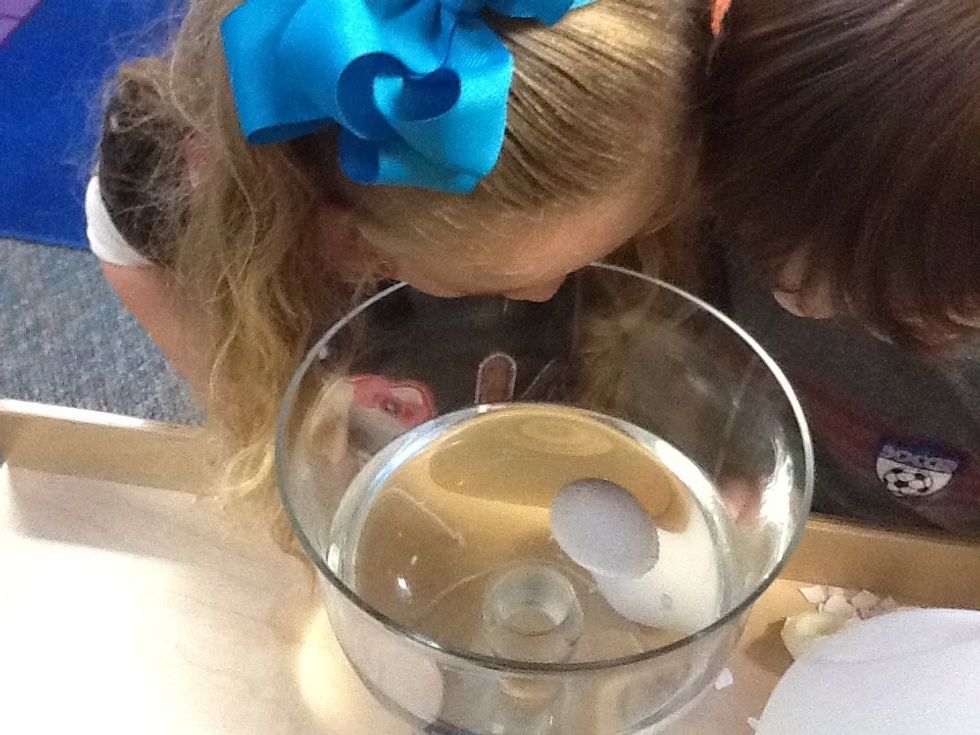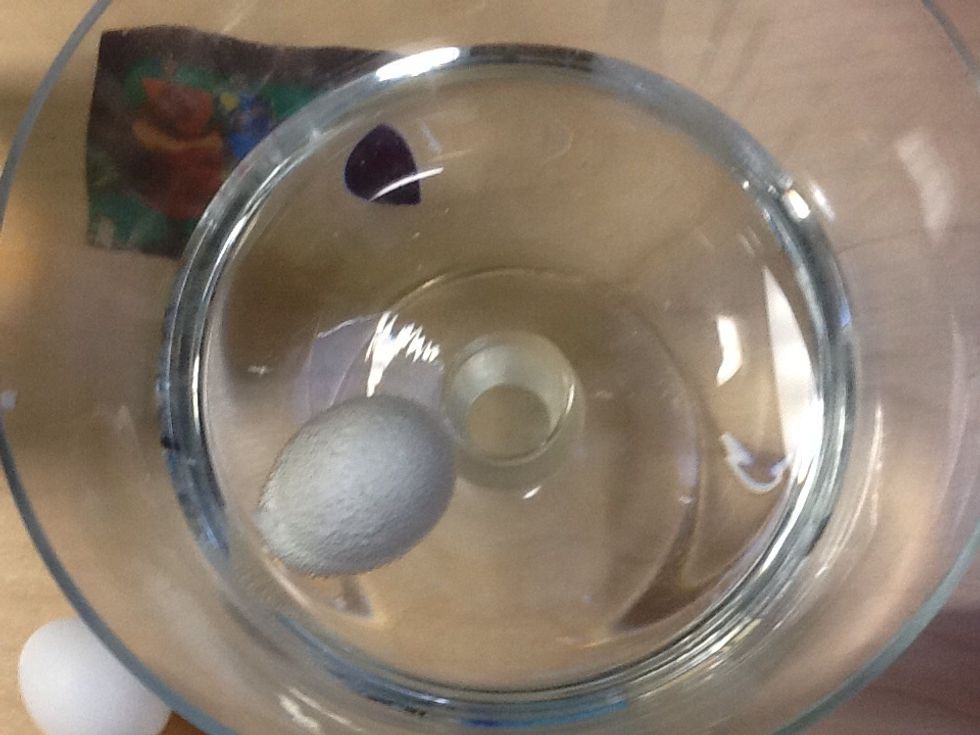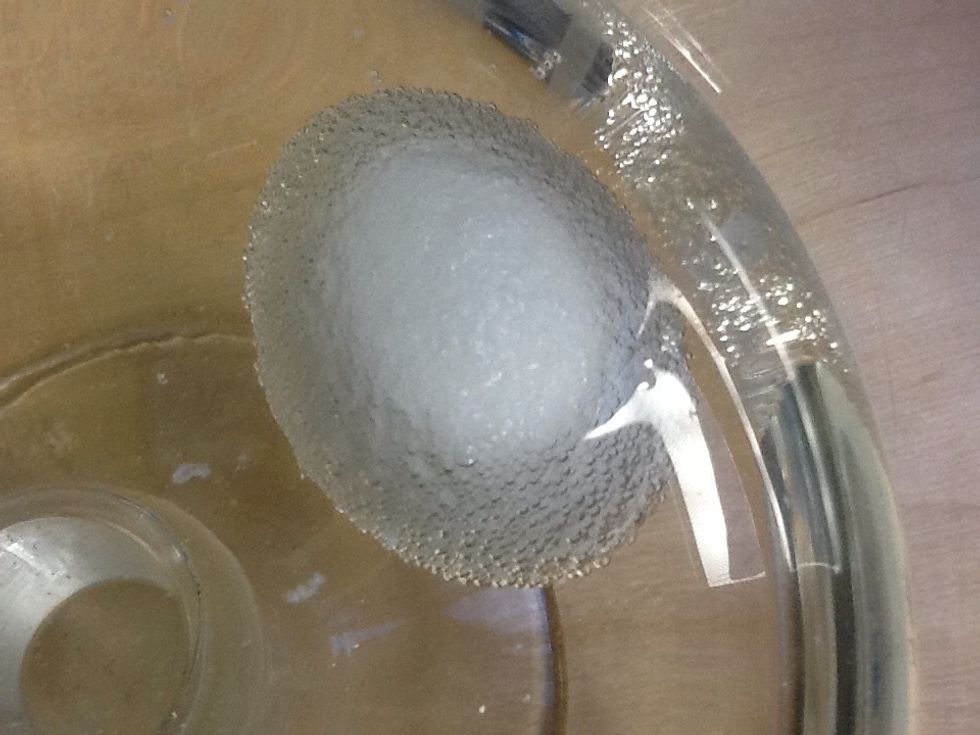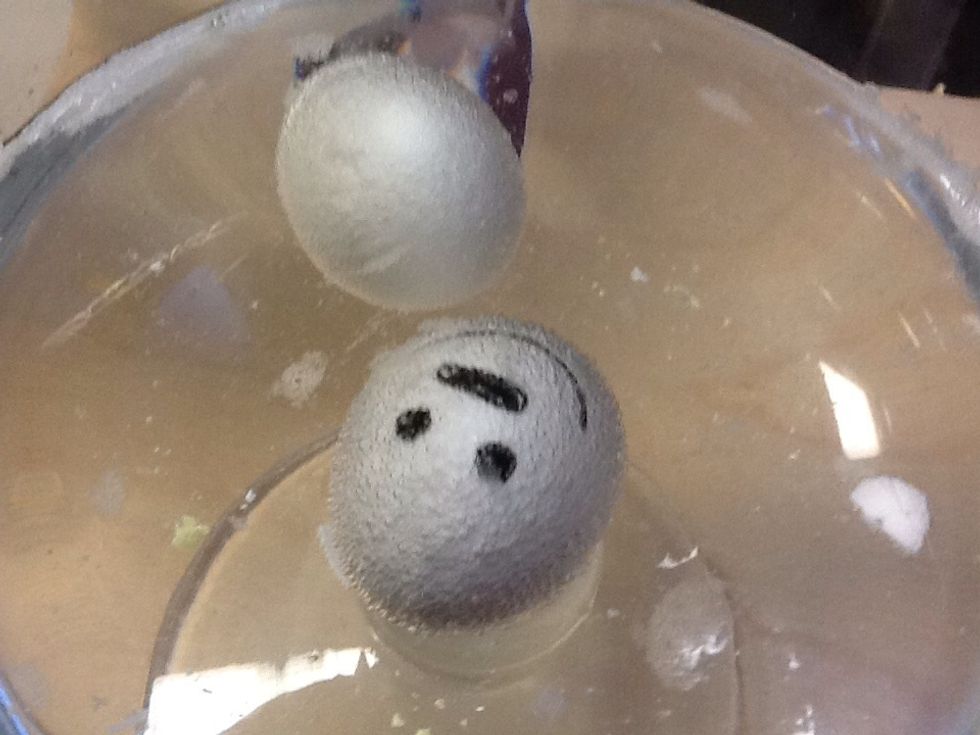How to make a real humpty dumpty
This is a science experiment that shows students the chemical reaction between calcium carbonate (shell) mixes with the acid in the vinegar. Pre-K speak: bubbles from "hungry vinegar" eats the shell.
73
STEPS
TOOLS

Gather all of your materials.

Let them experience each step. Show them a raw egg and a hard-boiled egg. Discuss what the shell is and does. Observe the raw egg and feel the hard-boiled egg. Start with the hard-boiled egg.

Peel the egg and let the students feel the egg underneath. Describe what the egg feels like.

Break the egg in half to show what the egg yolk looks like. Let the students feel the yellow center.

Using a raw egg, make your "Humpty Dumpty" by drawing a simple face, on the egg shell, with a white crayon.

We drew two eyes, a nose, and a smiley mouth. Students comments: "How will we see it when they (crayon and eggshell color) are the same?" **They come up with a solution later in the experiment!

Place "Humpty Dumpty" in a clear container, so that he can be seen from all sides.

Let the students smell the vinegar and discuss what it was like. Pour vinegar over the top of the egg. Make sure that the egg is completely covered. We said that "Humpty Dumpty" was going swimming.

You can see the "hungry" vinegar starting to eat away at the shell. If you look closely, there are tiny bubbles all over the egg.

Two of the students observing the "hungry" vinegar and bubbles.

Students exploring the vinegar and egg shells. **They were pinching their noses after being around the vinegar for a few minutes.

Here is what our "Humpty Dumpty" looked like after 30 minutes in the vinegar. We could see white pieces floating in the vinegar now. We could also see a lot more bubbles around the egg.

Our "Humpty Dumpty" has been swimming for 1 hour.

"Humpty Dumpty" has been swimming for 1 1/2 hours. The egg is actually spinning in the vinegar. **My kids loved that.

2 hours in the vinegar.

2 1/2 hours in vinegar.

3 hours later.

3 1/2 hours later.

At 4 hours, the kids were concerned that they couldn't see "Humpty Dumpty". We decided to try a "Humpty Dumpty" with a face drawn on with black crayon. Again, we used a raw egg.

Here is our "Humpty Dumpty" drawn with a black crayon. * This picture was taken by *S.

Two swimming now. *Picture taken by *C.

4 1/2 hours for the egg with a white face and 30 minutes for the egg with a black face. *Picture taken by *M.

24 hours later. The vinegar has eaten away all of the shell and left only our "Humpty Dumpty's" face.

My students observing the results of the "Humpty Dumpty" experiment.
- 2.0 Raw eggs
- 1.0 Hard boiled egg
- 1.0 Clear container
- 1.0 White crayon
- 1.0c Vinegar or enough to cover the egg
- 1.0 Humpty Dumpty Nursery Rhyme
- 1.0 Happy classroom of Pre-Kindergartners